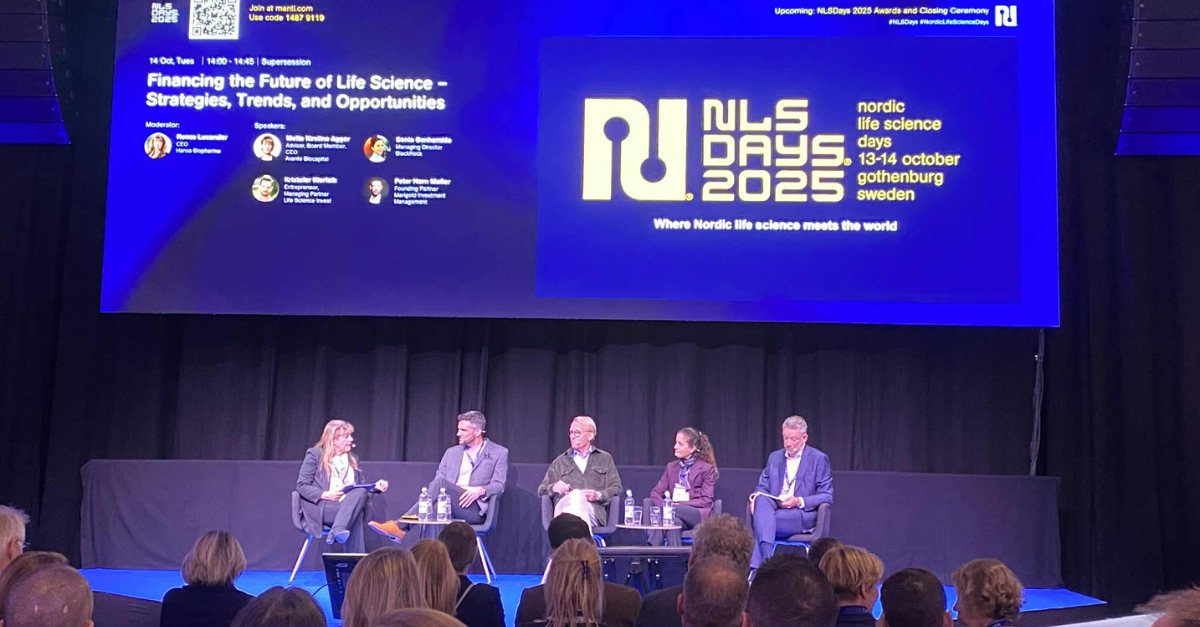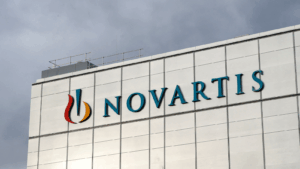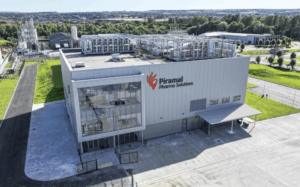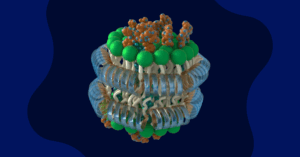At Nordic Life Science Days (NLSDays), a panel of leading Nordic investors and biopharma leaders explored how Europe’s life science financing landscape is evolving. Moderated by Renee Lucander, CEO of Hansa Biopharma, the discussion brought together Sonia Benhamida (Managing Director, BlackRock), Kristofer Klerfalk (Managing Partner, Life Science Invest), Peter Horn Møller (Founding Partner, Marigold Investment Management), and Johan Christenson (Senior Partner, HealthCap).
The conversation ranged from early-stage spin-outs to late-stage clinical development, examining how traditional venture models are adapting and new financing mechanisms are emerging to support the region’s competitive life sciences ecosystem.
The Classical Venture Model is Dead
Historically, investors took early-stage risks with the expectation that successful companies would raise subsequent rounds at higher valuations — allowing early backers to be diluted but rewarded for their risk. “The classical venture model is dead,” argued Johan, explaining that this model has broken down as investors increasingly wait until companies reach later stages with stronger clinical data or proven concepts before committing capital.
This creates a question: “Who should invest in the earlier stage?” Johan posed this as an unresolved challenge facing the industry, noting, “I don’t have a solution, but it’s a reflection I think one needs to start thinking about.” The gap is widening precisely where emerging biotechs need capital most — when transitioning from academic research to commercial development.
The Commercialization Problem
The Nordics have a huge asset base with high-quality science, infrastructure, and investor attention at levels comparable to London, Oxbridge, Switzerland, the Bay Area, and Boston. The region also sees a high volume of spin-offs, particularly from Sweden, which has an unusual approach to intellectual property. In most of Europe, universities own the IP created by their researchers. In Sweden, individual scientists own their IP — a system known as “teacher’s exemption.”
Panelists agreed that despite this scientific excellence and ease of spinning out, the Nordics are known to struggle with commercialization. The challenge stems not from a lack of quality, but from shortcomings in infrastructure and mindset. The discussion revealed that traditions in some research groups favor spinning out companies while other groups don’t — suggesting that decisions to commercialize aren’t always driven by the quality or commercial potential of the science itself. So, despite a strong culture and relative ease of spinning out companies, it doesn’t always translate into greater success.
Capital Concentration: Fewer Winners, More Competition
The panel discussed a shift in how European biotechs raise money. Traditionally, biotech companies raised small amounts to fund one study at a time. Now, companies are raising much larger amounts upfront — enough to complete multiple studies and get much further before needing more money. These bigger raises often mix different types of funding: traditional investment, loans, and grants.
But this creates a problem. When a few companies raise very large amounts, there’s less money available for everyone else. More companies are competing for a shrinking pool of capital.
This problem is exacerbated by how companies are valued. When a company raises a second or third round of funding, investors expect the company to be worth more than before — that’s their reward for investing early and taking risk. But that’s not happening consistently anymore. When valuations stay flat, early investors aren’t getting rewarded for taking early risks, so fewer investors want to invest early. This pushes even more money toward later-stage companies, making it harder for early-stage companies to get funded.
Alternative Financing Mechanisms
With traditional venture capital becoming more selective, alternative financing mechanisms are gaining importance. The panel provided guidance on when different funding sources make sense:
Grants and soft funding work well at the earliest stages. Companies should engage in soft funding early on to learn the process, as European grants like EIC and EIF can provide a credibility signal that helps them secure more financing down the road.
Debt financing can be powerful but requires careful timing. It allows companies to stretch their equity funding further, but should only be used after companies have proven their concept and reduced major scientific risks, ideally with multiple programs in development.
The panel challenged the idea that debt is “non-dilutive.” While it’s true you don’t give away equity when you borrow money, one speaker warned that taking debt too early is extremely risky. If the science fails and you can’t repay the loan, lenders can take control of the company.












